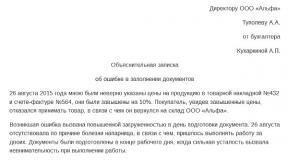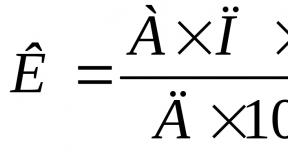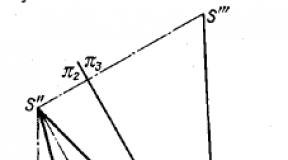Treatment of insomnia pharmacology. Insomnia and its treatment with sleeping pills. Phytotherapy for sleep disorders
The term "sleep disorder - dyssomnia" in the International Classification of Diseases of the 10th revision (ICD-10) is commonly understood as a violation of the quantity, quality or time of sleep, which in turn can lead to daytime sleepiness, difficulty concentrating, memory impairment and state of anxiety.
To describe sleep disorders, a two-component model was created that takes into account both subjective and objective signs of disorders. The authors of this model proceeded from the following assumption: “the clinical picture of clinical “bad” sleep occurs when and only when the somatic disturbance of the rhythm of sleep and wakefulness coincides with the patient’s increased neurotic tendency to complain.” But this model can also be considered dynamically: the initially organically conditioned disruption of the rhythm of the change of sleep and wakefulness can enhance reflection and a tendency to complain. On the other hand, external and internal conflict can cause tension or arousal that negatively affects sleep, and disturbed sleep, in turn, can itself have a negative negative impact on the mental state.
As Yu. A. Aleksandrovsky notes, from the point of view of mental activity, sleep is an extremely important factor, since its deprivation leads to irritability, drowsiness, and difficulties in solving interpersonal and professional problems. Mental exhaustion requires sleep much more often than physical fatigue. However, the ratio of sleep and wakefulness largely depends on the emotional state of a person and his satisfaction with life.
Epidemiological studies conducted abroad indicate that at least 35% (28-45%) of the adult population suffer from sleep disorders (for comparison, according to WHO, patients with diabetes make up 3%, AIDS patients - 3%). The spectrum of these disorders is wide and includes more than 70 nosological entities closely related to pulmonology, neurology, epileptology, cardiology, pediatrics, resuscitation, otolaryngology and dentistry. Persistent insomnia is a risk factor and precursor to depression. Thus, early diagnosis and effective treatment of insomnia can prevent severe depression, often leading to suicide. Chronic insomnia is also associated with an increased risk of car accidents, alcohol and other substance use. Short-term insomnia, lasting only a few days, is often the result of mental stress, an acute illness, or the thoughtless use of various medications for self-medication. Millions of people suffer from disturbed sleep due to social lifestyle factors. People who are divorced, widowed or separated, and those who are poor are more likely to suffer from insomnia. Diagnostic and therapeutic findings depend on whether the symptoms of disturbed sleep are transient or chronic.
At the same time, despite the high relevance of the study of sleep and the impact of sleep disorders on the quality of life, the issues of somnology have not yet received sufficient coverage in educational programs for a wide range of practicing physicians.
Diagnosis of sleep disorders should precede treatment.
Modern classification of sleep disorders includes insomnia, hypersomnia and parasomnia. The term "insomnia" has a subjective connotation, while the term "insomnia" is scientifically based. "Insomnia" is defined as a state of difficulty in initiating and maintaining sleep, often in combination with daytime weakness, weakness, decreased performance and drowsiness. "Insomnia" is a painful symptom and requires a medical approach to diagnosis and treatment. This approach, first of all, requires the differential diagnosis of these disorders. The causes of insomnia are diverse: 1) psychophysiological
reactions to stressful influences; 2) neurotic disorders; 3) endogenous mental illnesses; 4) somatic diseases; 5) abuse of psychotropic drugs and alcohol; 6) endocrine - metabolic diseases; 7) organic diseases of the brain; 8) syndromes that occur during sleep (sleep apnea syndrome, movement disorders in sleep); 9) pain phenomena; 10) changes in time zones; 11) constitutionally determined shortening of night sleep.
The clinical phenomenology of insomnia includes presomnic, intrasomnic, and postsomnic disorders.
Presomnic disorders are problems with falling asleep. With the long-term existence of presomnic disorders, obsessive-compulsive symptoms are formed in the form of “going to bed rituals”, “fear of bed”, “fear of not being able to fall asleep”. A polysomnographic study of these patients noted a significant increase in the time to fall asleep, frequent transitions from stages I and II of the first sleep to wakefulness.
Intrasomnic disorders include frequent nocturnal awakenings, after which the patient cannot fall asleep for a long time, and a feeling of "shallow" and "shallow" sleep. The polysomnographic correlates of these sensations are a significant representation of the superficial stages of sleep (I, II FMS - phases of slow sleep), frequent awakenings, long periods of wakefulness within sleep, reduction of delta sleep, and an increase in motor activity during sleep.
Postsomnic disorders are early awakenings (beyond the division of people into "owls" and "larks") and disorders that occur shortly after awakening. This group includes poor health immediately after sleep and the phenomenon of "sleep intoxication", when active wakefulness comes slowly. With these disorders, patients are dissatisfied with the night spent and characterize their sleep as
"non-restorative". They experience a feeling of "brokenness" and reduced performance. Postsomnic disorder can also be attributed to imperative daytime sleepiness, which occurs in 56% of patients.
The algorithm of the diagnostic process and the choice of therapy consists of the following elements
A) Differential diagnosis and identification of the causes of insomnia.
First, the leading symptom of sleep disorders is determined - insomnia, excessive sleepiness or restless behavior during sleep. The possible causes of sleep disturbances should then be considered, which include: comorbid conditions or their treatment; the use of substances such as caffeine, nicotine or alcohol; mental disorders (states of depression, anxiety or fear); acute or chronic stress; violation of daily rhythms; sleep apnea (accompanied by snoring or obesity); nocturnal myoclonus. Depression requires special attention, which requires the appointment of antidepressants. In most depressed patients, sleep disorders are manifested by the following features: 1) sleep disturbance and interrupted sleep with early
awakening; 2) decrease in the depth of sleep (slow waves, stages 3 and 4), primarily in the first sleep cycle; 3) shortened first non-REM sleep period (stages 2-4), which leads to premature entry into the first REM sleep phase (shortened REM latency); 4) uniform distribution of REM - sleep in all phases of sleep.
B) Accounting for the effects of drugs that cause insomnia.
When identifying the causes of insomnia, interns should be aware that some drugs commonly prescribed by general practitioners (not psychiatrists) cause sleep disturbances. The following groups of drugs that contribute to the occurrence of sleep disorders are distinguished:
1) antihypertensive drugs;
2) stimulants of the central nervous system;
3) anticancer drugs;
4) beta - blockers;
5) hormones;
6) oral contraceptives;
7) thyroid preparations;
8) anticholinergics;
9) sympathomimetic agents;
10) bronchodilators;
11) decongestants;
12) commercially available cough and cold preparations.
B) Behavioral therapy for insomnia.
Treatment of insomnia should begin with hygiene measures aimed at changing behavior. Patients should be taught to go to bed only when they feel sleepy, to use the bedroom only for sleeping and intimate life, and not for reading, watching TV, eating or working. If patients cannot fall asleep within 15 to 20 minutes of being in bed, they should get out of bed and move to another room. At this time, it is not recommended to watch TV, and you should read in low light. Patients should only go back to bed when they feel like sleeping. The goal is to restore the psychological connection between the bedroom and sleep, not between the bedroom and insomnia. In case of sleep disorders, even a short nap during the daytime should be avoided. Another useful behavioral intervention that has been shown to be effective is limiting bedtime to only actual sleep time.
D) Drug therapy for insomnia.
Rational pharmacotherapy of insomnia, especially chronic insomnia, in adult or elderly patients is characterized by five basic principles:
1) use of the lowest effective doses;
2) the use of a hopping regimen of reception (two to three times a week);
3) prescribing a medicine for short-term use (i.e., regular use for no more than three to four weeks);
4) stopping the use of drugs gradually;
5) make sure that insomnia does not recur after stopping the medication.
The awareness of the attending physician about the properties of certain hypnotic drugs contributes to the correct choice of the hypnotic drug. Preferred drugs are those that do not disrupt sleep patterns, selectively target insomnia symptoms, have a short half-life, and do not cause behavioral toxicity and dependence due to euphoric effects. When prescribing therapy, one should take into account previous experience in the treatment and self-treatment of patients with insomnia. Most often in the anamnesis of patients suffering from insomnia, doctors can identify self-medication with alcohol and over-the-counter drugs. Alcohol and antihistamines, commonly taken as sleep aids, have only a minimal effect on sleep and, if continued, interfere with sleep quality and cause behavioral toxicity. Herbal medicines generally do not have direct hypnotic properties, but rather sedatives, and are difficult to dose and predict aftereffects.
Many drugs used as hypnotics of the 1st and 2nd generations have become a thing of the past and are no longer used in practice. Based on data obtained by American researchers in the study of the effectiveness of therapy in adult patients (9114 people) suffering from insomnia. The most effective sleep aids are benzodiazepines, zopiclone, zolpidem, antidepressants, and melatonin. However, each of the selected groups of drugs has its own indications. Benzodiazepines have ataractic, sedative and hypnotic effects. However, due to the euphoric and relaxing effect, their use is fraught with drug dependence. In addition, many of them cause behavioral toxicity due to the accumulation of metabolites. Antidepressants have an undeniable advantage in the treatment of insomnia associated with depression. Doctors' concern about possible dependence on benzodiazepines and zolpidem and their side effects, along with the need for control, has led in recent years, according to American researchers, to a 30% decrease in the prescription of benzodiazepines and a 100% increase in the use of antidepressants as hypnotics. Serotonin-specific antidepressants such as trazodone and paroxetine relieve sleep disturbances and have fewer side effects than tricyclic antidepressants. It is possible that the use of safe serotonergic antidepressants for the treatment can reduce the burden of chronic insomnia and prevent depression that is dangerous in relation to suicide. Currently, antidepressants are used for the treatment of chronic insomnia at lower doses than for the treatment of depression and anxiety. Melatonin as a hypnotic agent is still not well understood and is preferable for insomnia associated with circadian rhythm disturbances. Zopiclone and zolpidem are third-generation drugs of modern hypnotics, which are similar in their psychopharmacological qualities. A more studied and approved drug in Ukraine is zopiclone, represented by a number of generic drugs. A high quality drug is zopiclone manufactured by the Latvian company "Grindex" with the trade name "Somnol".
Zopiclone (Somnol) belongs to a new class of psychotropic drugs (hypnotics) - derivatives of cyclopyrrolone. Its mechanism of action is associated with the gamma-aminobutyric acid (GABA-A) receptor complex. Zopiclone modulates the effect of GABA on the GABA - A complex through the benzodiazepine receptor, enhancing the activity of the cellular pump for pumping chloride ions into the cell. Although zopiclone is a non-selective benzodiazepine receptor agonist, its binding site is different from that of benzodiazepines. Unlike benzodiazepines, zopiclone exhibits a certain selectivity for the cerebral cortex, cerebellum, and hippocampus. The clinical profile of zopiclone can be described as exclusively hypnotic and tranquilizing. Zopiclone is distinguished by very low toxicity: LD50 is 2000-3000 times higher than the therapeutic dose. In the established single dose of 7.5 mg / day, zopiclone does not have a cumulative effect, but for people over the age of 65 and patients with liver and kidney damage, it is recommended to use a half dose (1/2 tablet) of the drug.
Comparative dynamic electroencephalographic (EEG) studies of the effectiveness of benzodiazepine (phenazepam) and zopiclone showed that after the completion of a course of treatment with phenazepam, there was an increase in 5- and 9-activity, an increase in the power of the α-band in the central and occipital regions, and smoothing of zonal differences. In 50% of patients, the a-rhythm slowed down by 1 Hz. These changes are due to increased synchronizing influences from the mid-stem structures of the brain, which clinically correlated with a decrease in the level of wakefulness. In patients treated with zopiclone, the dynamics of EEG parameters was of a completely different nature: a decrease in the spectral power of the 5- and 9-bands, a decrease in a-activity in the occipital regions were recorded. Strengthening of the disorganizing effects on the a-band may be due to the desynchronizing (activating) effect on the cerebral cortex from the stem formations, which increased the level of daytime wakefulness while improving the quality of night sleep.
Zopiclone (Somnol) has the following set of qualities: 1) provides a quick fall asleep when taking the minimum dose; 2) does not require increasing the dose to achieve the desired effect; 3) selectively binds to the receptor and causes only a hypnotic effect; 4) induces sleep close to physiological in structure and duration; 5) does not cause an aftereffect (in the morning, vigor is quickly restored, memory, reaction speed and cognitive functions do not worsen); 6) non-toxic, does not interact with other drugs and their metabolites; 7) does not cause addiction, overdose and drug dependence.
Thus, zopiclone (Somnol) approaches in its properties to the "ideal hypnotic" and has a therapeutic effect on all types of insomnia - short-term, episodic and chronic.
The duration of short-term insomnia is usually from 1 to 3 weeks. The etiological factors of short-term insomnia can be (in order of their importance): 1) life difficulties; 2) psychological stress; 3) various somatic diseases; 4) snoring; 5) excessive motor activity during sleep. In the treatment of short-term insomnia with zopiclone for 10 days, both the subjective assessment and the objective somographic structure of sleep improved in all treated patients.
Episodic insomnia is most often a consequence of the emotional stress of everyday life, emergencies, desynchronosis, the reaction of the individual to a somatic disease (nosogeny). Episodic insomnia is often associated with long flights. Moreover, it is shown that the influence of desynchronosis during long flights occurs more often when moving from east to west than from north to south. Studies by French scientists have shown that in case of sleep disorders due to desynchronosis, the use of zopiclone (7.5 mg) has a positive effect on adaptation to life in a new time zone.
The treatment of chronic insomnia is more difficult, since its causes are multiple, and these patients have a combined somatic and mental pathology. The use of zopiclone in chronic insomnia in combination with the main pathogenetic therapy is very effective.
Thus, timely diagnosis and treatment of sleep disorders in general medical (non-psychiatric) practice indicates the qualifications of a family doctor. Knowledge of somnology is an obligatory subject of undergraduate and postgraduate training of physicians. Modern treatment of insomnia is impossible without knowledge of third-generation hypnotics, among which one of the leading places is occupied by zopiclone (Somnol).
They end in a bad mood and drowsiness throughout the day. People are forced to resort to sleeping pills to get enough sleep. The pharmaceutical industry produces various drugs for insomnia. Some of them not only normalize sleep, but have many side effects that harm the body - addiction, impaired attention, severe psycho-emotional disorders. Therefore, with symptoms of insomnia, do not rush to the pharmacy for sleeping pills. Consult with a specialist who will help you choose a drug that promotes normal sleep in each specific situation. The fight against insomnia will be effective if you establish the causes of its occurrence and choose the right therapy.
Medicines for insomnia differ in therapeutic activity, but they work according to the same principle - they inhibit the activity of the brain, relieve nervous and muscle tension. The duration of action of drugs depends on the rate of their excretion and the degree of influence on the functions of the central nervous system.
Short-acting sleeping pills eliminate difficulties in falling asleep, do not violate the duration and ratio of sleep phases. Means of medium duration of action relieve excitation and increase inhibition. The effect lasts longer, which improves falling asleep and sleep quality. Long-acting drugs help with poor falling asleep, shallow sleep, frequent nocturnal awakenings.
All sleeping pills differ in chemical composition and affect the central nervous system in different ways.
Types of drugs for the treatment of sleep disorders
Barbiturates (Phenobarbital, Reladorm) are effective for severe insomnia, but cause drowsiness, lethargy, post-sleep irritation, headache, and muscle pain. With prolonged use, mental and physical dependence develops. Barbiturates shorten REM sleep cycles, which are important for nervous system recovery. Barbituric acid derivatives are available by prescription only.
Means against insomnia from the group of tranquilizers (Phenazepam, Nitrazepam, Sibazon, Midazolam) have low toxicity, do not give pronounced aftereffects, and are less likely to be addictive. Especially effective for insomnia caused by anxiety, emotional stress.
Insomnia drugs containing melatonin (Melaxen, Circadin, Melarena) do not violate the physiological structure of sleep, speed up falling asleep, and reduce the number of nocturnal awakenings. In the morning they do not cause a feeling of fatigue and drowsiness, they have a positive effect on the emotional sphere.
Medicines for insomnia group Z have virtually no side effects, do not cause post-somnia disorders. After waking up, a person does not feel discomfort. The drugs differ in duration of action. With difficulty falling asleep, Adante is prescribed. Ivadal, Zolpidem acts 5-6 hours. Long-acting sleeping pill Zopiclone supports sleep throughout the night without changing its structure. In patients with nocturnal manifestations of bronchial asthma, the duration of attacks is reduced. After prolonged use of group Z drugs, addiction may occur.
Antihistamines of the first generation (Diphenhydramine, Diprazine) have a slight sedative effect, are quickly excreted from the gastrointestinal tract.
The doctor should choose the drug for the treatment of insomnia. Uncontrolled use of hypnotics can form addiction, increase excitability instead of the expected hypnotic effect, cause muscle weakness, withdrawal symptoms, and impair attention and memory.
Over-the-counter sleeping pills
Depending on the composition of the drug are divided into three groups.
- Vegetable (Persen, Motherwort Forte).
Substances contained in plants normalize sleep, improve mood, strengthen the psyche, relieve anxiety, and calm the nervous system. Herbal preparations against insomnia are not toxic, act gently, can be taken for a long time, have a minimum number of contraindications. Means of plant origin are effective for mild disorders of the physiological process, for the prevention of insomnia during stress of various nature. With severe insomnia, they are used only as additional therapy. - Synthetic (Melaxen, Reslip, Phenibut).
Medicines improve sleep, are suitable for all age groups, do not affect psychomotor functions, and have minor side effects. - Combined (Barboval, Corvalol).
The products contain plant extracts and active medicinal ingredients. All substances reinforce each other's actions. Due to this, a quick hypnotic effect is achieved. Medicines of this group are indicated for minor sleep disorders and neurotic disorders, relieve irritability and make it easier to fall asleep. - Homeopathic (Hypnosed, Note, Passidorm).
Harmless non-addictive drugs contain a balanced set of components that eliminate fear, anxiety, problems when falling asleep. Homeopathic remedies do not violate the biochemical processes in the body, direct reserve forces to combat the causes of insomnia, and are not accompanied by aftereffect symptoms. For a stable and lasting effect, long-term use of homeopathic remedies is recommended.
Which sleeping pill to choose
Without a prescription, you can buy drugs that moderately affect the nervous system. They normalize sleep, heart rate, reduce nervous excitement. An effective remedy for insomnia does not have to be strong. With the right selection, even a light sleeping pill will give a positive result.
List of the most popular drugs for insomnia.
- Melaxen.
The synthesized analog of the pineal gland hormone (melatonin) is suitable for independent use for insomnia in people of various age groups. Tablets normalize the rhythms of sleep and wakefulness, make it easier to fall asleep, do not cause a feeling of lethargy upon awakening. The drug helps the body adapt when working at night and. In rare cases, swelling, headache, nausea occur. Melaxen is used to normalize the biological rhythm, promotes rapid falling asleep and easy morning awakening. - Persen.
Relieves irritability, anxiety, eliminates depression, promotes concentration. The composition of the sedative for insomnia includes extracts of lemon balm, mint and valerian roots. The components facilitate falling asleep by enhancing inhibitory processes in the central nervous system. Persen is recommended for prolonged falling asleep and frequent awakenings caused by stressful situations, overwork. - Donormil.
Effervescent tablets have a pronounced sedative effect, make it possible to fall asleep quickly, increase the duration of a night's rest. May cause palpitations, daytime sleepiness, dry mouth. Donormil does not affect the activity of the brain. - Glycine.
Sublingual tablets reduce the excitation of the central nervous system, improve metabolism in brain tissues, increase mental performance, and normalize sleep. Glycine is recommended for people with emotional instability, high excitability. - Valoserdin.
Due to the content of phenobarbital, it reduces the excitation of the central nervous system. Drops from insomnia provide a mild hypnotic effect, are prescribed for sleep disorders, neurosis-like conditions, cerebrovascular accidents. With prolonged use, drug dependence and depression may occur. - Atarax.
Removes anxiety, psychomotor agitation, relaxes smooth muscles, increases the duration and depth of sleep. At the beginning of treatment, drowsiness and general weakness may occur. - Phenibut.
It has a positive effect on the activity of the brain, reduces the severity of complications after traumatic brain injury, increases the resistance of the brain to high loads. Phenibut relieves anxiety, reduces emotional stress, improves the quality of a night's rest. It is prescribed for insomnia of neurotic origin of nature. - Corvalol.
It has a sedative effect, relieves spasms in the intestines, dilates blood vessels, makes it easier to fall asleep. It is well tolerated, but with prolonged use or overdose causes CNS depression. Experts recommend drinking drops for irritability and mild insomnia. - Valerian.
A herbal remedy with a sedative effect is used for nervous excitability, difficulty falling asleep caused by overexcitation, stress. In rare cases, provokes a depressed state.
New
New generation drugs help to cope with stress, improve the quality of sleep, and eliminate the causes of insomnia. They are quickly excreted from the body, so there are no aftereffect symptoms in the morning. The newer insomnia drugs are safer because they only work on brain receptors responsible for sleep.
- Sonilux.
The composition of the drops includes natural components of plant origin, which quickly enter the bloodstream and improve the psycho-emotional state. The remedy for insomnia, Sonilyuks, normalizes sleep and eliminates the causes of its disturbance, restores the heart rhythm and the functioning of the endocrine system. - Somnol.
The action of the drug is aimed at improving the quality and duration of night rest. With long-term treatment, the risk of dependence is not excluded. It is prescribed for patients with situational, transient, chronic forms of insomnia. - Rosem.
Recommended for insomnia associated with prolonged falling asleep, promotes sound sleep. The medicine for insomnia Rozerm does not cause side effects and dependence. - Sonata.
It is prescribed for difficult falling asleep, frequent awakenings, transient stance and. The drug does not change the ratio of fast and slow sleep. Does not affect daytime well-being and performance.
Vitamin complexes for insomnia
When a person finds himself in a stressful situation, the need for B vitamins increases many times over. Deficiency is formed with gastritis, taking certain hormonal drugs, pregnancy, physical exertion, and malnutrition. Insomnia can be provoked by a lack of serotonin, in the synthesis of which pyridoxine (B6) is involved.
Fatigue, drowsiness, depression, irritability, sleep problems appear. Vitamins of groups B, A, E and trace elements potassium, magnesium, calcium will help get rid of insomnia.

- Mega B Complex, consisting of 10 vitamins and 7 minerals;
- Sleep Optimizer, a complex of amino acids, plant extracts, melatonin, tryptophan;
- ALPHABET biorhythm containing folic acid, calcium, magnesium, vitamins C, A, B, extracts of lemon balm, motherwort;
- Yantifan, which contains L-tryptophan, succinic acid, vitamin B6.
Vitamin preparations reduce the excitability of the nervous system, contribute to a good night's rest.
The multitude of medicines and vitamins is confusing: “How to choose the best remedy for insomnia from all the variety?” For an answer, contact the specialists in the district clinics or specialized centers. Uncontrolled use of sleeping pills can complicate the situation. The sleep department will tell you how to get rid of insomnia without drugs with the help of,. Special clinics use non-drug methods to eliminate insomnia (electrosleep, relaxation therapy).
List of used literature:
- Levin Ya. I., Kovrov G. V. Some modern approaches to the treatment of insomnia // The attending physician. - 2003. - No. 4.
- Kotova O. V., Ryabokon I. V. Modern aspects of insomnia therapy // Attending physician. - 2013. - No. 5.
- T. I. Ivanova, Z. A. Kirillova, L. Ya. Rabichev. Insomnia (treatment and prevention). - M.: Medgiz, 1960.
AT This review by American authors provides recommendations for the practical treatment of insomnia and the scientific basis for modern treatments. Insomnia tends to increase with age and is more common among women, although laboratory studies show that older men are more affected by sleep disturbance. Divorced, widowed, or separated people are more likely to report insomnia than married people; low socioeconomic status is also correlated with insomnia. Persistent insomnia is a risk factor and a harbinger of depression. Thus, effective treatment of insomnia may make it possible to prevent major depression. Chronic insomnia has also been linked to an increased risk of car accidents, increased alcohol consumption, and daytime sleepiness. Therefore, patients suffering from insomnia deserve serious attention.
The duration of insomnia in a patient is of great diagnostic value. Short-term insomnia lasting only a few days is often the result of severe stress, acute illness, or self-medication. Insomnia lasting more than three weeks is considered chronic and usually has a variety of causes. Diagnostic and pharmacotherapeutic findings depend on whether the symptoms are transient or chronic.
Chronic primary insomnia is diagnosed when there is difficulty in inducing or maintaining sleep, or when there is no restorative sleep for at least an entire month, causing significant distress or impairment of social, occupational, or other important functions. The sleep disturbance in primary or psychophysiological insomnia is not caused by some other cause of the sleep disturbance, a psychiatric disorder, or drug exposure.
Doctors should try to determine the cause of insomnia.
The first step is to identify the main symptom of sleep - for example, insomnia, excessive sleepiness or restless behavior during sleep. Physicians should then consider possible causes, which include: comorbid conditions or their treatment; the use of substances such as caffeine, nicotine or alcohol; mental disorders (state of anxiety, fear); acute or chronic stress, such as occurs as a result of bereavement (loss of loved ones); violation of circadian rhythms (caused by night shifts); sleep apnea (accompanied by snoring or obesity); nocturnal myoclonus (convulsive muscle twitching), etc.
The most common obstacle in establishing a diagnosis is the difficulty in understanding that chronic insomnia has many causes.
Behavioral Therapy
Patients should be taught to go to bed only when they feel sleepy and to use the bedroom only for sleep and sex, not for reading, watching TV, eating, or working. If patients cannot fall asleep after 15-20 minutes in bed, they should get out of bed and move to another room. They should read in low light and avoid watching television, which emits bright light and therefore has an exciting effect; Patients should only go back to bed when they feel like sleeping. The goal is to restore the psychological connection between the bedroom and sleep, not between the bedroom and insomnia. Patients should get out of bed at the same time each morning, regardless of how much sleep they had during the previous night. This stabilizes the sleep-wake schedule and improves sleep efficiency. Finally, short naps during the daytime should be minimized or avoided altogether to increase the drive to sleep at night. If the patient needs daytime naps, a 30-minute nap at noon will probably not disturb sleep at night.
Another useful behavioral intervention that has been shown to be effective is limiting bedtime to only actual sleep time. This approach, known as sleep restriction treatment, has been shown to be effective in a randomized clinical trial with older adults. This method allows for a slight "accumulation of sleep debt", which increases the patient's ability to fall asleep and stay asleep. The time allowed to stay in bed is gradually increased, as much as is required for a good sleep. For example, if a patient with chronic insomnia sleeps 5.5 hours at night, his time in bed is limited to 5.5-6 hours. The patient then adds approximately 15 minutes per week to the start of each nightly bed time, getting up at the same time each morning, until at least 85% of bed time is spent sleeping.
Treatment with drugs
Rational pharmacotherapy of insomnia, especially chronic insomnia in adults and senile people, is characterized by five basic principles: use the lowest effective doses; use hopping dosage (two to three times a week); prescribe medicines for short-term use (i.e., regular use for no more than three to four weeks); stop using the medicine gradually; and to ensure that insomnia does not recur after it has ceased. In addition, drugs with a short half-life are generally preferred to minimize daytime sedation. Alcohol and over-the-counter drugs (such as antihistamines) have only minimal effect in inducing sleep, further disrupting sleep quality, and adversely affecting performance the next day. In table. Table 1 lists the sedative hypnotic drugs that are commonly prescribed, with information on dose (adults and seniles), onset of action, half-life, and the presence or absence of active metabolites. In table. Table 2 lists the most commonly used drugs that interfere with sleep.
Table 1. Drugs commonly prescribed
to treat insomnia
Medicinal means |
Usual medical Dose (mg/day) |
mine actions |
half- |
Active metabolite |
|
|
adults |
For people of senile age | ||||
| Clonazepam | 0,5-2 | 0,25-1 | 20-60 | 19-60 | No |
| Clorazepate | 3,75-15 | 3,75-7,5 | 30-60 | 6-8 48-96 |
there is |
| Estazolam | 1-2 | 0,5-1 | 15-30 | 8-24 | No |
| Lorazepam | 1-4 | 0,25-1 | 30-60 | 8-24 | No |
| Oxazepam | 15-30 | 10-15 | 30-60 | 2,8-5,7 | No |
| Quazepam | 7,5-15 | 7,5 | 20-45 | 15-40 | there is |
| 39-120 | |||||
| Temazepam | 15-30 | 7,5-15 | 45-60 | 3-25 | No |
| Triazolam | 0,125-0,25 | 0,125 | 15-30 | 1,5-5 | No |
| Chloral hydrate | 500-2000 | 500-2000 | 30-60 | 4-8 | there is |
| Haloperidol | 0,5-5 | 0,25-2 | 60 | 20 | No |
| Trazodone | 50-150 | 25-100 | 30-60 | 5-9 | No |
| Zolpidem | 5-10 | 5 | 30 | 1,5-4,5 | No |
Based on clinical efficacy trials in adult patients with chronic insomnia, the authors reviewed 123 controlled drug trials (total number of patients 9114) and 33 controlled behavioral intervention trials (1324 patients). American researchers have concluded that the subjective symptoms and objective signs of chronic insomnia respond to brief behavioral and pharmacological interventions. Both interventions characteristically reduce the amount of time it takes to fall asleep by 15-30 minutes compared to the time before treatment, and the frequency of waking by one to three per night. Although pharmacological agents seem to work more reliably in the short term, and behavioral interventions seem to produce longer-term effects, there are no direct comparisons based on long-term efficacy. Based on data from controlled trials, benzodiazepines, zolpidem, antidepressants, and melatonin (only one controlled trial) are effective pharmacological agents. Stimulus control, sleep restriction, relaxation strategies, and cognitive behavioral therapy are effective behavioral interventions for short-term treatment.
Table 2 Commonly prescribed drugs that
known to cause insomnia
| Antihypertensive | Stimulants of the central | Antitumor |
| drugs | nervous system | drugs |
| clonidine | Methylphenidate | Medroxyprogesterone |
| Leuprolide acetate | ||
| Beta blockers | Hormones | Goserelin acetate |
| Oral | Pentostatin | |
| Propranolol | contraceptives | Daunorubicin |
| Atenolol | Thyroid drugs | Interferon alpha |
| Pindolol | glands | |
| Methyldopa | Various | |
| Reserpine | Cortisone | |
| Progesterone | Phenytoin | |
| Nicotine | ||
| Anticholinergics | Sympathomimetic amines | Levodopa |
| Quinidine | ||
| Ipratropium | Bronchodilators | Caffeine (products, |
| bromide | commercially available) | |
| Terbutaline | ||
| Albuterol | Anacin | |
| Salmeterol | Excedrin | |
| Metaproterenol | Empirin | |
| Xanthine derivatives | ||
| Theophylline | Cough and cold medicines | |
| Decongestants | ||
| Phenylpropanolamine | ||
| Pseudoephedrine |
The authors controlled randomized double-blind trials in elderly patients with chronic insomnia due to various causes. In 23 trials involving 1,082 patients, including 516 psychogeriatric patients or residents of nursing homes, Pittsburgh psychiatrists found scientific evidence for the short-term (up to three weeks) efficacy of zolpidem and triazolam in the elderly, as well as temazepam, flurazepam, and quazepam. but not chloral hydrate.
The half-life of sedative hypnotics is highly variable. Side effects such as mental decline, weakness, excessive sleepiness, and accidents are much more common at high doses and when active metabolites accumulate. Flurazepam and quazepam have the longest half-lives (from 36 to 120 hours) and therefore have the advantage of providing an anxiolytic effect the next day and reducing the likelihood of recurrence of insomnia. However, prolonged use of these drugs can lead to daytime sleepiness, impaired cognition and coordination, and worsened depression. Drugs with an intermediate half-life (10 to 24 hours) without active metabolites include temazepam and estazolam. They are less likely to be associated with excessive daytime sleepiness. Drugs with very short elimination times (2 to 5 hours) include triazolam and zolpidem.
The efficacy of zolpidem, one of the imidazopyridines, was found to be similar to that of benzodiazepines in the study of acute and chronic insomnia. Although both zolpidem and benzodiazepines exert their effects through modulation of the GABA (gamma-aminobutyric acid) receptor complex, zolpidem is less likely than benzodiazepines to disrupt sleep patterns and have side effects on cognition and psychomotor abilities (and may have less effect on sleep syndrome). cancellation). Although these potential benefits suggest that zolpidem may be useful in the treatment of acute and chronic insomnia because it acts through the GABA receptor complex, it theoretically carries the same risk, including addiction, as benzodiazepines and, as a result, its use for more than 4 weeks is usually discouraged.
Before prescribing any sleeping pills, the physician must consider the underlying safety concerns. For example, pregnant women, as well as patients with possible sleep apnea, which may be exacerbated by the use of hypnotics, and patients suffering from renal or hepatic insufficiency, may be at greater risk of side effects of sedatives. Physician concerns about possible dependence on benzodiazepines and zolpidem and their side effects, along with control needs such as triplicate prescriptions, have led in recent years to a 30% decrease in benzodiazepine prescriptions and a 100% increase in the use of antidepressants as hypnotics.
Serotonin-specific antidepressants such as trazodone and paroxyten relieve the sleep disturbance that accompanies depression and have fewer side effects than tricyclic antidepressants. The beneficial effects of serotonin-specific antidepressants in chronic insomnia have not yet been systematically evaluated. It is possible that the use of treatment with a safe serotonergic antidepressant could reduce the burden of chronic insomnia and prevent dangerous depression. Antidepressants are now widely used, and prescribed at lower doses, to treat insomnia than depression. This practice has spread in the absence of data from controlled clinical trials. It is possible that the use of treatment in which a low dose of antidepressants (eg, 20 mg of paroxitene per day) can both improve sleep and help prevent depression in chronic insomnia
- a pathological condition in which the process of onset and maintenance of sleep is disturbed. Depending on one or another clinical form of insomnia, there are difficulties falling asleep (presomnic form), disturbances during sleep (instrasomnic) and after waking up (postsomnic form); there is also a decrease in the efficiency of sleep, nocturnal awakenings. The diagnosis is established on the basis of physical examination, history taking, polysomnography. Treatment of insomnia includes compliance with sleep hygiene, the appointment of drug therapy, physiotherapy, psychotherapy.
ICD-10
G47.0 Sleep disturbances and sleep maintenance [insomnia]

General information
Insomnia is a disruption of the sleep-wake cycle. Pathology is determined by the lack of quality and quantity of sleep, which are necessary for normal human life. The disease occurs in 30-45% of the world's population. For some of them (10-15%), insomnia is a serious problem requiring medication. It should be noted that with age, problems with falling asleep and maintaining a physiologically adequate sleep occur more and more often, so older people experience insomnia more often than younger people.
Insomnia - the more popular name for the pathology used by patients and even doctors, is not correct, since the disease is not accompanied by a complete loss of sleep.

Causes of insomnia
Insomnia may be based on a physiological predisposition, psychogenic disorders, diseases of the nervous system and internal organs. Insomnia often occurs in people suffering from neuroses and neurosis-like conditions: psychosis, depression, panic disorders, etc. Patients with somatic diseases that cause night pain, shortness of breath, heart pain, respiratory disorders (arterial hypertension, atherosclerosis, pleurisy, pneumonia, chronic pain, etc.). Sleep disorders may be accompanied by organic lesions of the central nervous system (stroke, schizophrenia, parkinsonism, epilepsy, hyperkinetic syndromes); pathology of the peripheral nervous system.
Predisposing factors also have an impact on the development of sleep disorders, namely: life in a metropolis; frequent change of time zones; long-term use of psychotropic drugs; alcohol intake; constant intake of caffeinated drinks; shift work and other occupational hazards (noise, vibration, toxic compounds); sleep hygiene disorder.
The pathogenesis of insomnia is considered to be not fully understood, however, scientific studies and experiments in the field of neurology have shown that patients have the same increased brain activity during sleep as during wakefulness (this is indicated by a high level of beta waves); increased levels of hormones at night (cortisol, adrenocorticotropic hormone) and a high metabolic rate.
Classification of insomnia
According to the duration of the course, insomnia is divided into:
- Transient, with a duration of no more than a few nights
- Short-term (from several days to weeks)
- Chronic (3 weeks or more)
Physiological (situational) and permanent (permanent) insomnia are also distinguished. By origin, primary insomnia is distinguished, resulting from personal or idiopathic (unexplained) causes, and secondary, arising against or as a result of psychological, somatic and other pathologies.
According to the severity of clinical symptoms, insomnia is:
- Mild (mild) - rare episodes of sleep disturbance
- Moderate severity - clinical manifestations are moderately pronounced
- Severe - sleep disturbances are observed every night and have a significant effect on daily life.
Symptoms of insomnia
Clinical signs of insomnia, depending on the time of their manifestation, are divided into groups: presomnic, intrasomnic and postsomnic disorders. Disturbances before, after and during sleep can occur individually and in combination. All 3 types of disorders are observed only in 20% of middle-aged patients and in 36% of elderly patients with insomnia.
Insomnia leads to a decrease in daily activity, impaired memory and attentiveness. In patients with mental pathology and somatic diseases, the course of the underlying disease is aggravated. Insomnia can cause delayed reactions, which is especially dangerous for drivers and workers servicing industrial machines.
Presomnic disorders
Patients complain of problems with the onset of sleep. Usually the stage of falling asleep lasts 3-10 minutes. A person suffering from insomnia can spend from 30 to 120 minutes or more falling asleep.
An increase in the period of onset of sleep may be due to insufficient fatigue of the body during a late rise or early bedtime; pain reaction and itching of a somatic nature; taking drugs that stimulate the nervous system; anxiety and fear that arose during the day.
As soon as a person is in bed, the desire to sleep instantly disappears, heavy thoughts arise, and painful memories emerge in the memory. At the same time, some motor activity is observed: a person cannot find a comfortable position. Sometimes there is causeless itching, discomfort on the skin. Sometimes falling asleep occurs so imperceptibly that a person perceives it as wakefulness.
Trouble falling asleep can form strange bedtime rituals that healthy people don't have. Perhaps the appearance of fear from the lack of sleep and fear of bed.
Intrasomnic disorders
The patient complains about the lack of deep sleep, even a minimal stimulus causes awakening followed by prolonged falling asleep. The slightest sound, the included light and other external factors are perceived especially sharply.
Spontaneous awakening can be caused by terrible dreams and nightmares, a feeling of filling the bladder (repeated urge to urinate), autonomic respiratory failure, and rapid heartbeat. A healthy person who does not suffer from insomnia can also wake up, but his awakening threshold is noticeably higher, subsequent falling asleep is not problematic, and the quality of sleep does not suffer.
Intrasomnic disorders also include increased motor activity, manifested by the “restless legs” syndrome, when a person makes shaking movements with his legs in a dream. The cause of the sleep apnea syndrome, which is often observed with insomnia, is the inclusion of an arbitrary mechanism for regulating breathing. Occurs most often in obesity and is accompanied by snoring.
Postsomnic disorders
Insomnia also manifests itself in the waking state after waking up. It is difficult for a person to wake up early, he feels weak all over his body. Drowsiness and reduced performance can accompany the patient all day. Non-mandatory daytime sleepiness is often observed: even with all the conditions for good sleep, a person cannot fall asleep.
There are sharp mood swings, which adversely affect communication with other people, often exacerbating psychological discomfort. Some time after waking up, a person complains of headaches, a rise in pressure (hypertension) is possible. In this case, a more pronounced increase in diastolic pressure is characteristic.
Diagnosis of insomnia
Insomnia is diagnosed based on the patient's complaints and physical condition. In this case, the actual duration of sleep is not critical; The 5-hour milestone is a kind of minimum: a shorter sleep for 3 days is equivalent to one night without sleep.
There are 2 clear diagnostic criteria for insomnia: a delay in falling asleep for more than 30 minutes and a decrease in sleep efficiency up to 85% or less (the ratio of the time of actual sleep to the time the patient spent in bed).
Violation of the circadian rhythm (early falling asleep and early rising - a "lark" person or late falling asleep and late rising - a "owl" person) is diagnosed as a pathology if a person experiences post-somnia disorders and does not have the opportunity to sleep longer or fall asleep early.
Sometimes a person suffering from chronic insomnia is offered to keep a diary for a month, in which periods of wakefulness and sleep are recorded. In cases where insomnia is accompanied by impaired breathing (obstructive sleep apnea) and motor activity, as well as in case of ineffective drug therapy, a consultation with a somnologist and polysomnography are prescribed. A computer study gives a complete picture of sleep, determines the duration of its phases and evaluates the work of the whole organism during sleep.
Diagnosis of insomnia is not difficult, more often it is more difficult to determine the true cause or combination of factors that caused insomnia. Often, consultations of narrow specialists are required in order to identify somatic pathology.
Treatment of insomnia
Transient insomnia usually resolves on its own or after the causes of its occurrence are eliminated. Subacute and even more chronic insomnia require a more careful approach, although treatment of the underlying cause is a fundamental factor.
Successful treatment of insomnia involves maintaining good sleep hygiene. Sleeping at the same time every day, avoiding daytime sleep, active daytime wakefulness can completely eliminate insomnia in the elderly without the use of medications.
Psychotherapy allows you to eliminate psychological discomfort and restore sleep. Acupuncture and phototherapy (treatment with high intensity white light) have shown good results in the treatment of insomnia.
The use of sleeping pills promotes rapid falling asleep and prevents frequent awakenings, however, hypnotics have a number of adverse effects, ranging from addiction to addiction and rebound effects. That is why drug treatment of insomnia begins with herbal preparations (motherwort, mint, oregano, peony, and other medicinal herbs that have a sedative effect) and products containing melatonin. Drugs with a sedative effect (neuroleptics, antidepressants, antihistamines) are prescribed to increase the duration of sleep and reduce physical activity.
The drugs imidazopyridines (zolpidem) and cyclopyrrolones (zopiclone) have a short duration of action, do not cause post-somnic disorders - these are one of the safest chemical sleeping pills. A group of tranquilizers - benzodiazepines (diazepam, lorazepam) to a greater extent inhibits brain processes, thereby reducing anxiety and increasing sleep latency. These drugs are addictive, seriously affect the speed of reaction, and at the same time enhance the effect of barbiturates and analgesics.
The rules for taking medications for insomnia include: adherence to the duration of treatment with sleeping pills - an average of 10-14 days (no more than 1 month); drugs can be prescribed in combination, taking into account their compatibility; one or another drug is selected depending on the concomitant somatic pathology and the minimum set of side effects. For preventive purposes, sleeping pills are prescribed 1-2 times a week. It is important to understand that the use of sleeping pills is exclusively symptomatic treatment. This fact and the mass of undesirable consequences force them to limit their intake as much as possible.
Forecast and prevention of insomnia
To completely get rid of insomnia, you should adhere to the following rules: do not delay a visit to a neurologist with obvious signs of insomnia; do not take drugs without a doctor's prescription. It is necessary to observe the daily routine (commensurate loads, walks and sufficient time for sleep) and the formation of one's own stress resistance; emphasis should be placed on psychological techniques and minimal use of medication.
The prognosis for acute and subacute insomnia is favorable, its treatment in most cases does not require the use of hypnotics and tranquilizers. Treatment of advanced chronic insomnia is a long process; only close interaction between the patient and the doctor will allow choosing an effective treatment regimen and achieving a positive result.
Insomnia, known in scientific circles as insomnia, can be a symptom of a medical condition, but it often appears on its own. Psychological and physical overstrain, stress, increased excitability of the nervous system and other factors can adversely affect the quality of a night's rest.
Fund types
If the sleep phases are disturbed, a person cannot fall asleep for a long time or he has nightmares, this significantly worsens the quality of life. Sleep deprivation can cause the following problems:
- daytime sleepiness;
- decrease in working capacity;
- increased irritability;
- problems with the work of the cardiovascular system;
- inhibition of reaction, etc.
Insomnia medications will help prevent such consequences. The most effective drugs will be prescribed to you by a somnologist - a doctor who studies and treats sleep disorders. The specialist also looks for the problem that caused the violation, and chooses a way to eliminate it.
The best remedy for insomnia will be different for each patient.. Pharmacists, homeopaths and traditional healers offer various ways to get rid of this problem. The choice falls on one or another drug or technique, depending on what exactly provoked the sleep disorder, how old the patient is, whether he has concomitant acute and chronic diseases, and other factors.
Pharmacological remedies for insomnia are divided into the following types:
- Prescription drugs are dispensed only with a prescription from the attending physician;
- over-the-counter synthetic sleep aids;
- herbal preparations for insomnia;
- combined remedies for insomnia, which contain both herbal and chemical components.
Homeopathic preparations for the treatment of insomnia can also be singled out separately. They have practically no side effects, are not addictive, have a minimum of contraindications and are suitable for treatment even for children.
However, these funds do not give results immediately, only after completing a full course, you will see improvements. A separate category is non-drug methods, among which are:
- traditional medicine for sleep;
- acupuncture (acupuncture);
- hypnosis;
- self-hypnosis, etc.
Sleeping pills can only be taken for a certain time, abuse leads to negative reactions and the development of complications.
Herbal sleeping pills
If you have recently been worried about insomnia, it is best to choose herbal medicines. The natural composition is not as dangerous to the body as the chemical one. In addition, the drugs are not addictive, after the end of therapy you will not feel physical or psychological attachment to them. Herbal preparations are dispensed mainly without a prescription. Let's get acquainted with them in more detail.
| Name | Active ingredients | Efficiency |
|---|---|---|
| "Ortho-Taurine" | Succinic acid, B vitamins, taurine, magnesium. | Stabilize sleep at night, help improve mood and increase daytime performance, act quickly enough. |
| Neurostabil | Hops, fireweed, peony, oregano, motherwort, B vitamins. | It is used to treat insomnia that has developed against a background of stress, stabilizes sleep, improves the tone of the whole body, restores vitality and improves mood. |
| "Corvalol" (similar to "Valocardin") | Phenobarbital, valerian, mint. | Used for psychomotor agitation, helps to relax, also acts on the soft muscles of the internal organs as an antispasmodic. |
| "Biolan" | Peptides and amino acids. | Restores the nervous system and healthy sound sleep, has a general strengthening effect on the body, is not addictive. |
| "Balance" | Tyrosine, selenium, lecithin, Ginko Biloba extract, magnesium. | It relaxes well, eliminates insomnia caused by stress, excessive mental activity or psychological overstrain. |
OTC drugs
You can choose the best medicine for insomnia among drugs that are available without a prescription. They are prescribed for mild or moderate sleep disorders.
Medicines can be natural, synthetic or combination. They have a minimum of contraindications, but before use, you still need to consult a doctor.
Let's take a closer look at what you can drink to get a good night's sleep.
| Tool name | Mechanism of influence | Flaws |
|---|---|---|
| "Melaxen" | The activity of the drug is ensured by its main active ingredient - a synthetic analogue of melatonin (sleep hormone), the drug is used for insomnia quite often, it helps to fall asleep quickly, reduces the number of awakenings at night, improves the quality of night rest, does not cause drowsiness during the day, does not affect driving or control of complex mechanisms. | May in some cases cause allergies and peripheral edema. |
| "Persen" | Removes excessive excitability and irritability, relaxes the central nervous system, acts as a mild antispasmodic. | Prohibited for use in people with diseases of the biliary tract, children under 12 years old, overdose or too long intake can cause constipation. |
| "Valerian" | Calms the nervous system, relaxes the soft muscles of the internal organs. | It gives a stable effect, but acts rather slowly, it is not taken for a long time from insomnia, as it helps to reduce pressure. |
| "Motherwort" | Normalizes the work of the central nervous system, fights insomnia, neuroses and hypertension. | It can cause allergic reactions, tinctures contain alcohol, therefore they are contraindicated in children, drivers of vehicles, pregnant and lactating women. |
| "Dormiplant" | It is used in cases of sleep disorders, with poor sleep, nightmares, eliminates anxiety, irritability and unreasonable anxiety. | It has sedative properties, therefore it is contraindicated in persons who cannot lower the reaction rate. |
| "Glycine" | Regulates inhibitory processes in the cerebral cortex, has anti-anxiety and anti-irritant properties, improves memory. | A separate study of the hypnotic properties of the drug was not conducted. |
| "Novo-Passit" | Relieves psycho-emotional stress, eliminates anxiety, has a sedative effect, suitable for single use, as it acts quickly enough. | It causes drowsiness during the day, sometimes it can provoke a feeling of depression, it is not prescribed for people diagnosed with chronic alcoholism. |
 Medicines for this type of insomnia are potent psychotropic drugs. They are released only by prescription, are strictly dosed individually for each patient, give side effects and have a lot of contraindications. They are prescribed to restore the functioning of the central nervous system.
Medicines for this type of insomnia are potent psychotropic drugs. They are released only by prescription, are strictly dosed individually for each patient, give side effects and have a lot of contraindications. They are prescribed to restore the functioning of the central nervous system.
Properly selected therapy with the use of such drugs allows patients to get rid of anxiety and unreasonable fear, restore joy to life, normalize sleep, improve performance and appetite.
The most common tranquilizer drug is Phenazepam. Its active substance,epine, normalizes the functioning of the central nervous system and eliminates the causes that cause insomnia. The tool is very good and effective, but can cause side effects such as nausea, heartburn, fatigue, drowsiness, disorientation in space, dizziness and allergies.
Homeopathy for insomnia
While medicines can cause side effects and have a lot of contraindications, homeopathy can treat insomnia without harm to health. The natural composition makes the preparations completely safe for the body, and the low concentration of active substances eliminates overdose. You can use the following effective sleeping pills to normalize a night's rest:

- improves the quality of sleep;
- eliminates anxiety and aggression;
- accelerates falling asleep;
- fights chronic fatigue;
- improves mood;
- prevents nervous tension.
The effectiveness of the product is provided by its active substances. It was based on gaba alishan - the discovery of the Japanese scientist Tsushida. It stabilizes blood circulation and normalizes the utilization of glucose, strengthens memory, improves sleep, eliminates melancholy and disorders of the nervous system.
Also included is a beaver stream - an antispasmodic and sedative substance that improves tone and mood. Lofant plant extract prevents aging, has bactericidal properties, improves the functioning of the nervous system.
Also, the drug contains a collection of 32 herbs, the action of which is aimed at restoring sleep, normalizing pressure and heart rate, relaxation and relaxation.
These properties of the tool endowed with its natural natural components. The composition includes a beaver stream, which is used to treat nervous disorders and disorders of the cardiovascular system. Alishan gaba is also highly effective - a natural product that strengthens the entire body and improves sleep quality. A collection of 32 herbs provides the patient with complete relaxation and relaxation, lofant extract stabilizes the nervous system, has a bactericidal effect and slows down aging.
It is worth consulting a doctor to find out which traditional medicine medicines will have the desired effect and will not harm your health. The course prescribed by the specialist must be completed to the end, otherwise you will not receive any improvements.
There are various recipes that can be used to normalize a night's rest, we will look at them in more detail.

In conclusion
Official and traditional medicine offers effective drugs to combat insomnia. They may contain plant and chemical components. The most powerful drugs are tranquilizers, they are available only by prescription.
For those who do not want to risk their health, homeopathic remedies have been invented, consisting of natural substances.
Before using any method of treating sleep disorders, you should consult a doctor so as not to harm your health.



















